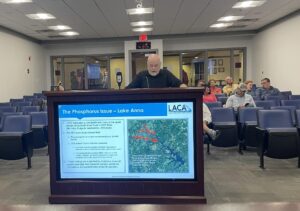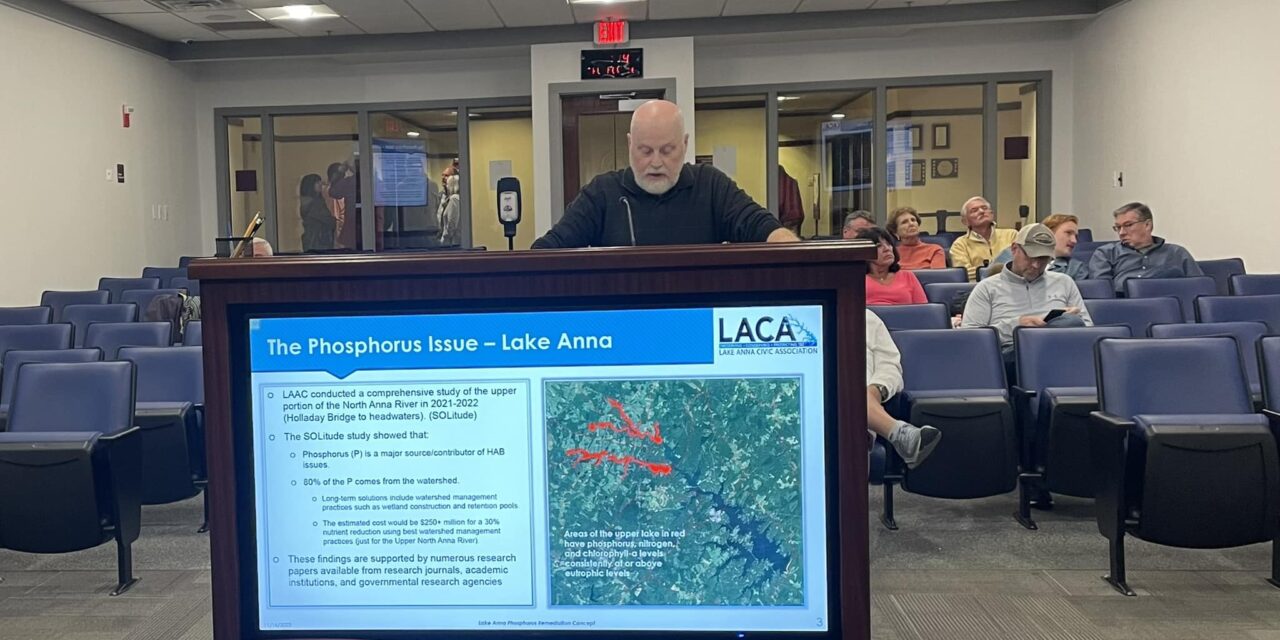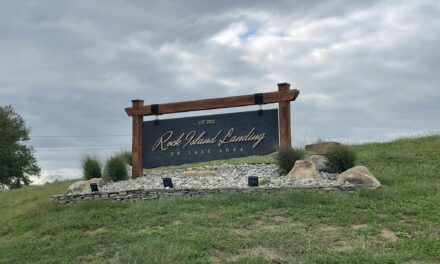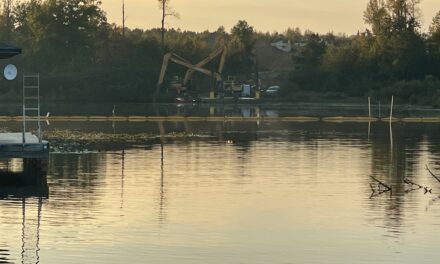
LACA Offers Update On Algae Bloom Issues
By Harry Looney
If you live in the upper part of the lake, north of the 208 bridge, you are undoubtedly aware of harmful algae blooms (HAB) and the recreational “No Swim” advisories issued by the Virginia Department of Health (VDH). The VDH recreational advisories are issued based on cyanobacteria (aka “blue green algae”) cell counts that exceed established thresholds for human safety.
There is a huge amount of research being conducted on cyanobacteria and HABs. The bottom line finding of much of the research is that we are dealing with a very complex problem with no “silver bullet” solution. What we do know from this extensive amount of research is that the primary sources of cyanobacteria growth are nutrients (phosphorous and nitrogen), pH levels in the water, the amount of sunlight, and higher air and water temperatures.
So, what can LACA and you as homeowners and users of the lake do to achieve positive effects against this very complex problem? LACA’s research and work with state agencies, academic institutions, and industry partners led us to several technologies that mitigate the problem, so we conducted test projects over the past two years using hydrogen peroxide-based algaecides and sound generation devices.
These mitigation technologies are criticized by some as “band-aid” solutions. LACA agrees that the effects are only short-term, but we were looking for cost effective ways for Homeowner Associations (HOAs) and individual home/property owners to deal with the localized effects they experience in their part of the lake. We collected a large amount of data and we will provide these data to HOA Boards and individuals looking for short-term mitigation in their area of the lake.
As the 2023 recreational season ends, LACA’s focus is transitioning to the main source of the cyanobacteria issue, nutrients, and in particular, excess phosphorus levels. LACA and DEQ data over the past 20 years show that the upper parts of the lake are “sick” due to excess, out of balance nutrients with phosphorous being the nutrient of primary concern.
To address this nutrient level imbalance, LACA worked with our state delegates and senators over the 2023 session to get $1 million in funding for cyanobacteria mitigation and remediation at Lake Anna, and we are pleased that the funding was approved in the 2023 budget amendments. We are currently working with our local elected officials, the county staffs, the Lake Anna Advisory Committee (LAAC), and Dominion Energy to ensure this funding is used to address the phosphorous issue that research, and more than 20 years of DEQ and LACA water sampling data, shows is the major source of our cyanobacteria problem.
One way to approach phosphorous remediation is to conduct extensive efforts in the watershed to control and limit the amount of nutrients entering the streams and creeks that eventually flow into the lake. Data from a recent study conducted by LAAC on the upper part of the North Anna River branch indicates that it would conservatively cost $250 million to achieve a 30% reduction of nutrient levels in that portion of the watershed (865 acres of the total 4,400 acres in the upper portion of the lake).
The price-tag to conduct these extensive efforts makes this phosphorous reduction path much more difficult to implement, but LACA is doing things such as working with landowners to improve, establish, or increase riparian buffers in the watershed through funding provided by Dominion Energy and Dupont.
We are also working on increasing shoreline aquatic vegetation in the lake to provide additional “consumers” to take phosphorous out of the water before it can be consumed by cyanobacteria and other plant and animal species.
Another, more cost-effective way to achieve phosphorous remediation is to treat the inflows and the lake sediment with products that essentially mineralize the phosphorous making it unavailable for consumption by the lake’s biomass. While these methods are still expensive, there are data and implementation examples around the country that indicate this is a viable path to achieve near-term results. The products are proven to have no negative effects on the environment (plants or animals) while reducing excess phosphorus to levels that are known to be needed in a healthy ecosystem.
LACA is pleased that the state and local governments are taking a stand to address cyanobacteria and HAB issues at Lake Anna. It is clear, after four years of research and testing, and analysis from 20 years of data collection that the next logical step in cyanobacteria/HAB control is phosphorous remediation. The state has provided funding to start reducing phosphorous levels in the lake and we are excited to be part of the solution.
LACA would like to thank our members, generous donors, Dominion Energy, Dupont, and volunteers that make our cyanobacteria monitoring, mitigation, and remediation efforts possible.
Harry Looney
LAAC Water Quality Program Manager





















